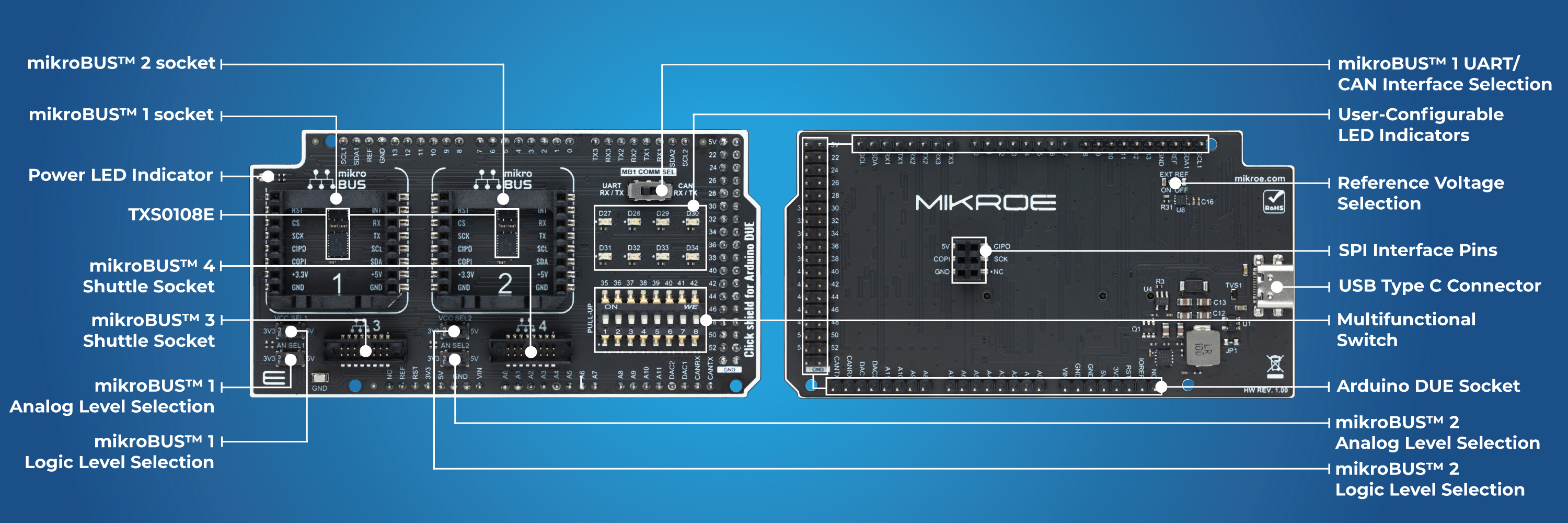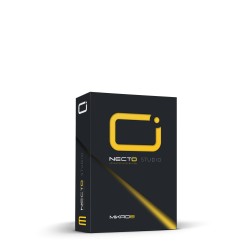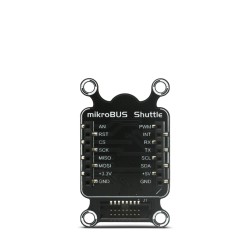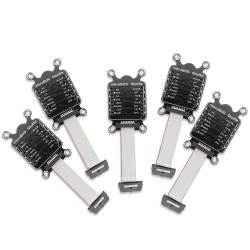Main features
Click Shield for Arduino DUE comes equipped with four mikroBUS™ sockets, with two in the form of a Shuttle connector, allowing all the Click boards™ to be interfaced with the Arduino DUE host board with no effort. This way, MIKROE allows its users to add any functionality from our ever-growing range of Click boards™, such as WiFi, GSM, GPS, Bluetooth, ZigBee, environmental sensors, LEDs, speech recognition, motor control, movement sensors, and many more. More than 1600 Click boards™, which can be stacked and integrated, are now available.

The Arduino DUE is a high-performance microcontroller board built around the Atmel SAM3X8E ARM Cortex-M3 CPU, marking it the first to feature a 32-bit ARM core. Running at an impressive 84MHz clock speed with 96KB of SRAM, it is designed to handle demanding applications. The board features 54 digital input/output pins, of which 12 can be used as PWM outputs and 12 analog inputs, making it versatile for various I/O requirements. Additional features include 4 UARTs (hardware serial ports), USB OTG (On-The-Go) capability, 2 DACs, 2 TWI (Two-Wire Interface) connections, and dual CAN buses, which enhance its communication capabilities. The DUE also has a power jack, SPI header, JTAG header, reset button, and an erase button, ensuring comprehensive functionality for complex projects.
There are eight switches, which you can use as inputs and eight LEDs marked from D27 to D34, which can be used as visual outputs of the DUE board. In addition, this shield features the MCP1501, a high-precision buffered voltage reference from Microchip. This reference is selected by default over the EXT REF jumper at the bottom of the board. You can choose an external one, as you would usually do with an Arduino DUE board. There is also a GND hook for testing purposes. Additionally, this Click Shield also features an additional switch labeled MB1 COMM SEL, allowing the UART RX and TX pins of the mikroBUS™ 1 socket to be used as CAN interface pins (CAN RX and TX) by toggling the switch to the CAN position.
This Click Shield also has several switches that perform functions such as selecting the logic levels of analog signals on mikroBUS™ sockets and selecting logic voltage levels of the mikroBUS™ sockets themselves. Besides, the user is offered the possibility of using any Click board™ with the help of existing bidirectional level-shifting voltage translators (TXS0108E), regardless of whether the Click board™ operates at a 3.3V or 5V logic voltage level.
Once you connect the Arduino DUE host board with our Click Shield for Arduino DUE, you can access hundreds of Click boards™, working with 3.3V or 5V logic voltage levels. Our Click boards™ are also equipped with a library containing functions and example codes for MIKROE compilers available on LibStock, which can be used as a reference for further development.





































